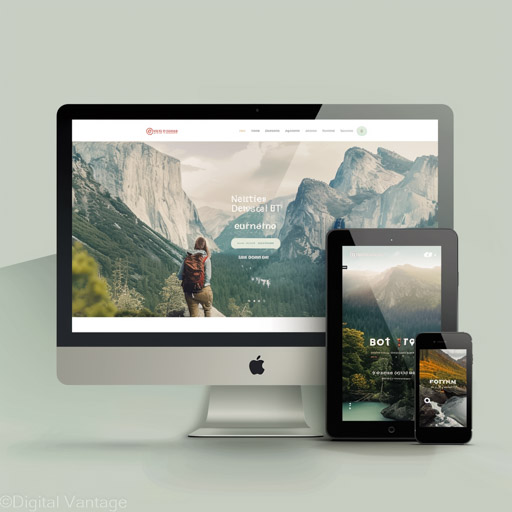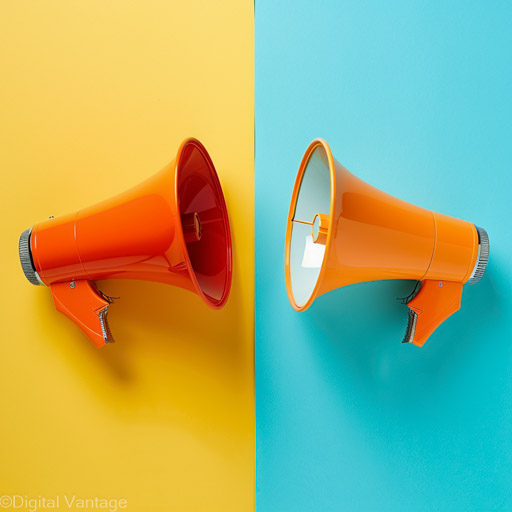
Unlock Explosive Sales Growth. Secrets to Supercharge Your website's Conversion Rates!
Turn Clicks into Customers, Optimize Your Website for Success
Imagine walking down a bustling city street, where every storefront competes for your attention with bright signs and inviting displays. Now, picture your website in a similar scene, amidst a digital marketplace teeming with competitors. What makes a passerby choose one shop over another? Often, it’s not just what's inside, but how inviting the entrance feels. This is the essence of optimizing your website for conversion: making your digital 'storefront' so compelling that it turns casual browsers into loyal customers.
For many small to medium business owners, the realm of web design and technology seems like uncharted territory, filled with jargon and complex concepts. But it doesn't have to be. Whether you’re a seasoned entrepreneur or just starting out, enhancing you website’s design to improve user experience and boost conversion rates can be straightforward and enormously impactful.
Understanding website Conversion Fundamentals
Why does conversion matter?
Conversion is the critical moment when a potential customer decides to take an action on your site—be it completing a purchase, signing up for a newsletter, or booking a consultation. Think of it as someone not just glancing at your shop window, but actually stepping inside to see what's on offer.
The Basics
In its simplest terms, conversion rate is the percentage of visitors who complete a desired action on your site. A high conversion value means more than just good business—it’s a sign that your website is efficient, effective, and aligned with your customer’s needs. Imagine you're a cafe owner; your conversion rate would not just be the people buying your coffee, but those who return regularly because they enjoy the ambiance and the quality of your service.
Metrics and Impact
Understanding and monitoring your website's conversion metrics can illuminate how well your site aligns with business goals. For example, if you're the artisan behind a boutique furniture shop, a high conversion rate could mean your website effectively showcases your craftsmanship and convinces customers of the value of your pieces, just as your friendly chat might in a physical store.
To deepen our understanding, let’s consider Anna, a fictional but representative small business owner. Anna recently launched an online boutique offering handmade jewellery. She noticed her site received a lot of traffic but not many sales. By analysing her website's data, she realized that many visitors dropped off at the product description page. This insight led her to revamp that page with clearer descriptions, better photos, and more prominent 'Add to Cart' buttons. These changes made it easier and more tempting for visitors to make a purchase, similar to rearranging a physical store layout to make the checkout counter more accessible and inviting. 
In this journey of digital transformation, the story of Anna is not uncommon. Like adjusting the lighting and layout in a physical store to make products irresistible, tweaking your website for optimal conversion involves understanding the pathways people take through your site and making that journey as smooth and compelling as possible.
By gratifying these basics, even entrepreneurs without a tech background can begin to see their website not just as a tool, but as an active participant in their business’s success story.
Design Principles to Enhance User Experience
The Role of Intuitive Navigation
Imagine a well-organized market where everything is exactly where you expect it to be, allowing you to find what you need without any confusion. This is what intuitive navigation on your website should feel like. It guides the visitor through your digital space as effortlessly as a helpful store clerk might in a physical store. Clear, logical navigation not only makes for a pleasant browsing experience but also encourages visitors to stay longer and explore deeper into your site.
Responsive Design
In today’s world, your website needs to look great and function flawlessly across a variety of devices—desktops, tablets, and smartphones. Think of responsive design as the key to making your storefront accessible to all, whether they are walking by, driving past, or flying over. A website that adjusts smoothly to any screen size is like a door that opens wider to welcome more visitors. 
Color Psychology and Typography
The colors and fonts you choose are the visual voice of your brand. Just as the decor of a cafe can influence the mood of its customers, the aesthetic choices on your website can affect how visitors feel and behave. For instance, using blue hues can evoke trust and security, making it a popular choice among financial institutions, while vibrant oranges and yellows might express energy and creativity, perfect for a marketing agency. 
Illustrative Example
Consider Michael, a local bookstore owner who decided to take his curated collections online. Initially, his website was packed with text and lacked visual appeal. After consulting with a web designer, he introduced thematic color schemes for different genres and used distinctive typography that mirrored the feel of classic and modern literature. These changes not only beautified his site but also made it easier for customers to navigate and find the books that suited their tastes, significantly improving user engagement and sales.
Content Strategy That Converts
Crafting Compelling CTAs
A call-to-action (CTA) is your direct invitation for visitors to engage with your business. It’s like the friendly shop owner who asks, "Can I help you?" but positioned strategically throughout your website. Your CTAs should be clear, compelling, and convey a sense of urgency. Phrases like "Book now to secure your spot!" or "Limited offer, get yours while supplies last!" can create a feeling of scarcity and prompt immediate action. 
Relevance and Quality of Content
The content on your website should be as inviting as a warm, well-lit cafe filled with the aroma of coffee. It must answer your visitors' questions and provide them with valuable information. Whether it’s blog posts, product descriptions, or customer testimonials, the quality of your content reflects the quality of your business. It’s about building trust by offering value, much like a knowledgeable salesperson who knows their product inside out and can address every customer concern.
Balancing Information and Persuasion
While your website should inform, it should also persuade. Consider the balance between providing enough information to be helpful without overwhelming the visitor, akin to a sommelier who knows exactly how much to share about a wine without overshadowing the diner’s experience.
Real-World Application
Let's look at Emma, who runs a small wellness retreat. Her original website listed detailed information about the health benefits of her programs, which was informative but overwhelming. After reevaluating her content strategy, she simplified her descriptions and added powerful testimonials and attractive CTAs. This not only made her site more engaging but also helped potential clients make quick and confident decisions about joining her retreats.
In integrating these elements—intuitive design, engaging content, and strategic use of technology—you lay the groundwork for a website that doesn’t just attract visitors but converts them into customers, enhancing the growth and sustainability of your business.
Leveraging Technology for Smarter Conversions
Introduction to Conversion-Enhancing Technologies
In the digital realm, certain tools and software act like skilled assistants, making your job easier and your business more effective. These technologies can automate processes, provide valuable insights, and enhance interactions, ultimately leading to better conversion rates.
A/B Testing
Think of A/B testing as a continuous improvement tool for your website, similar to how a chef tweaks recipes based on customer feedback. By comparing two versions of a webpage, you can determine which elements—be it a headline, button color, or layout—drive more conversions. This method removes guesswork and bases changes on actual user response, ensuring that your site evolves in alignment with customer preferences.
Chatbots and Interactive Aids
Imagine having a friendly, helpful assistant available 24/7 to answer potential customers' questions. That’s what chatbots do on your website. They engage visitors the moment they arrive, offering help and guiding them towards making a purchase or booking a service. This immediate interaction can significantly reduce bounce rates and increase the chances of conversion.
Analytics Tools
Using analytics tools is like having a high-powered microscope for your website. These tools allow you to see exactly how visitors interact with your site, from the pages they linger on to the paths they take before making a purchase. With this information, you can make informed decisions about where to make improvements or how to better tailor your content to meet user needs. 
Illustrative Example
Let's consider Tom, who runs an online specialty tea shop. By implementing Google Analytics, he discovered that many visitors left the checkout page before completing a purchase. To address this, he introduced a chatbot that pops up during checkout with an offer to answer any last-minute questions about the products or the shipping process. This small change led to a noticeable decrease in abandoned carts and increased overall sales.
Maintaining and Scaling Up website Efficiency Ongoing Optimization
Ongoing Optimization
Your website is not a set-it-and-forget-it tool but a living part of your business that requires regular updates and maintenance. Just as a store owner might rearrange their layout or update their inventory based on customer feedback and seasonal changes, your website needs regular audits and updates to ensure it remains relevant and effective.
Scalability of Design
As your business grows, so too should your website. Scalability in web design means that your site’s structure and technology are prepared to handle increased traffic and evolving business needs without losing performance. Think of it as future-proofing your digital presence, ensuring that it can grow seamlessly alongside your business.
Security
Trust is essential in converting visitors to customers, particularly online where concerns about data security are paramount. Enhancing your website’s security measures, such as implementing SSL certificates and regular security audits, is akin to installing a robust alarm system in a physical store—it protects not only your assets but also builds trust with your customers.
Real-World Application
Emily owns a growing online apparel store. As her traffic and sales increased, she invested in scalable web hosting and a content delivery network (CDN) to improve her website’s load times and handle high traffic volumes more efficiently. She also made sure to prominently display security badges and SSL certificate information on her site, reassuring customers that their transactions were secure. These upgrades not only enhanced the user experience but also reinforced customer confidence, leading to higher conversion rates and repeat business.
By integrating these advanced tools and principles into your website strategy, you position your business not just to attract visitors, but to convert them into customers effectively and securely, supporting both immediate sales and long-term growth.
Conclusion
In the bustling digital marketplace of today, your website is more than just a business card; it's a dynamic gateway to engaging and converting potential customers. From understanding the essentials of website conversion to implementing design principles that enhance user experience, and leveraging the latest technology for smarter conversions, we've explored a range of strategies that can turn casual clicks into loyal customers.
Regular maintenance and scalable design ensure that as your business grows, your site remains a powerful tool, not just to meet but to exceed the expectations of modern consumers. By employing these strategies, you are not just keeping up; you are setting a standard, and inviting your customers into a continuously evolving story that they want to be a part of.
Now, armed with these insights and strategies, it's your turn to revisit your digital storefront. Evaluate, enhance, and transform your website from a mere online presence to a vibrant, conversion-optimized hub that mirrors the passion and dedication you bring to your business every day. Let's turn those clicks into lasting customer relationships and propel your business towards greater success.
Begin today by assessing your website’s current conversion efficiency with our free downloadable checklist and see where your journey to optimization can start!
Digital Vantage team
Konrad Barejko, your business partner